How To Preserve Dead Animals? – (Ways to Preserve & More)
- How to preserve dead animals? Here are the 5 methods to preserve dead animals
- 1. Using 10% Formalin solution & 70% Ethyl or Isopropyl alcohol
- 2. Performing Taxidermy which involves skinning or dehiding the dead animal
- 3. Using Paraffin wax to ensure anaerobic conditions and prevent dehydration of the dead animal
- 4. Performing Cryopreservation which involves freezing the dead animal in liquid nitrogen at about -196°C
- 5. Doing Lyophilisation (Freeze-Drying) in which the dead animal is gently frozen, and then dried under a high-pressure vacuum to extract water out of it
- So, Why do we need to preserve specimens?
- What liquid is used to preserve dead animals?
- Can you preserve a dead animal in resin?
- Does rubbing alcohol preserve dead animals?
How to preserve dead animals? Here are the 5 methods to preserve dead animals
For the purpose of display, study, and future research it is a must that the dead animals are preserved. This will help to keep the body of the dead animal safe from injury, rotting, and further decay.
Preservation keeps their body intact even after death and such preserved dead animals can be kept for hundreds of years without much maintenance, and still, the animal itself will look the same as it was before its death.
Preserved specimens will inform us about themselves and the time and place of their collection for the purpose of various scientific research.
Nowadays biologists use various methods to preserve dead animals. One of the most popular method is to wet-preserve any dead animal by using formalin or ethyl alcohol.
Other popular preservation techniques are by following study skins, free-dried mount, skin mount, preservation in resin, etc.
Below, are 5 of the most well-known methods to preserve dead animals. Check these out:
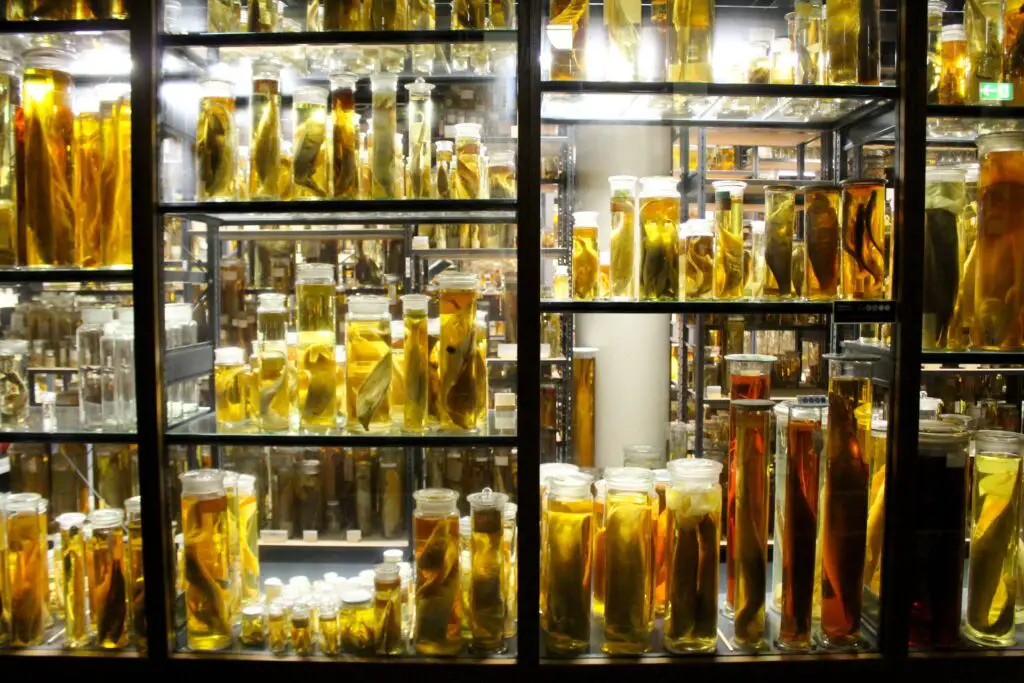
1. Using 10% Formalin solution & 70% Ethyl or Isopropyl alcohol
In this method, we will first collect a freshly dead animal which can be most of the invertebrates like starfish, earthworm, etc., and vertebrates like fish, frogs, lizards, snakes, etc.
Then we will freeze that specimen for at least about 1 week inside a refrigerator. You can also keep it inside the deep freezer in your refrigerator.
Keeping the specimen inside the refrigerator will cause death to the various bacteria, maggots, and other parasites that are there inside the dead specimen.
Then we need to prepare a 10% formalin solution. 10% formalin is a 1:10 dilution of 100% formaldehyde in distilled water prepared using a measuring cylinder, i.e.1 part saturated formaldehyde in water diluted with 9 parts of distilled water.
Then we take out the specimen out of the refrigerator and let it seat for a while (about 10 to 20 minutes).
Then by using a syringe with a thin needle we inject the 10% formalin solution into the body cavity, limbs, neck, and tail portion of the animal.
This will give the animal a puffed appearance and help it to regain its shape while fixing and preserving the animal from inside.
Next, we store the specimen inside a closed jar by filling 10% formalin solution inside and keep this jar for about a week or two.
In most of the cases, you will find that the color of the formalin liquid inside the jar getting blurry and dirty.
Now, it’s time to prepare 70% Ethyl alcohol solution or 70% Isopropyl alcohol solution, whichever you choose both works well.
In order to prepare the alcohol solution take either 100% Ethyl Alcohol or 100% Isopropyl Alcohol and add distilled water to it in the ratio of 7:3, i.e for every 700 ml of 100% Alcohol add 300 ml of distilled water using a measuring cylinder.
Next, we need to remove the filled formalin out of the jar and fill the jar with either 70% Ethyl Alcohol solution or 70% Isopropyl Alcohol solution and close the jar with an air-tight lead.
Your dead animal is now preserved inside the jar and will be intact for hundreds of years to come. Just make sure that you keep it in a cool, dry, and dark place.
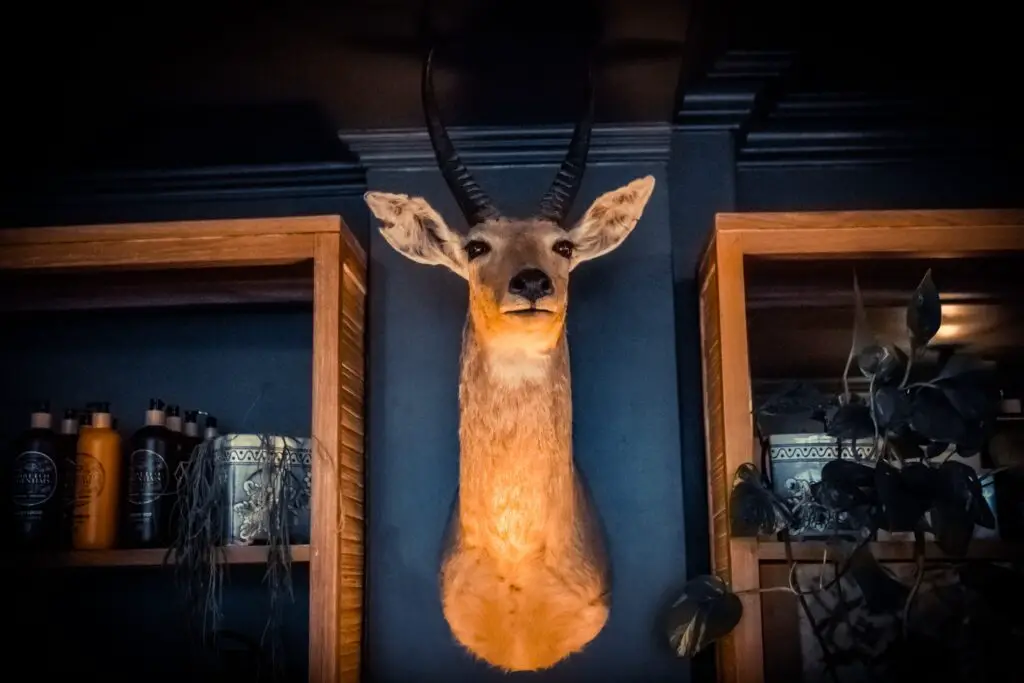
2. Performing Taxidermy which involves skinning or dehiding the dead animal
Taxidermy is the art of stuffing animals done by taxidermists in which all of the organs, bones, and tissues of the animal body are removed, while only keeping the skin with fur or feathers damage-free.
The skin with the fur is then scraped off to remove the extra tissues from inside, cleaned, dried, and then mounted on a framework that will give the preserved animal its real look, stability, and stature.
Taxidermy is usually done to large-sized mammals, birds, fish, reptiles, larger insects, and arachnids. This technique is used to preserve the dead animal in a life-size mount and study skins for keeping in museums mostly.
To do so, first the fresh dead animal is collected and is frozen inside a refrigerator for about two to three hours to prevent the growth of any microbes and parasites.
Next, we need to prepare or purchase a ready-made mount for that animal that can be a plaster cast or a wooden mount, or a steel frame.
Then we need to remove the skin along with the feathers or fur of the animal carefully. For doing so we can make a small cut in the belly of the animal and then peeling out the whole skin off the body.
Remember that skin is the most important organ for such living-like preservation. So, kindly make sure that you don’t damage the skin, and also that the fur or feathers must be there attached to the skin.
Here is a catch that you must remember, that you can remove the skin from the mammal’s head as you would for the rest of the body, but in the case of lizards, fish, and birds, you’ll need to remove the brain, eyes, and tongue and leave the shape of the head intact for preservation.
Next, after taking out the skin portion of the body, we need to rub a thick layer of non-iodized salt onto the flesh-side of the hide (skin) and keep that for about a day or two in a cold dry place, and after a day or two days, we scrap the extra flesh from the flesh side of the hide.
We need to repeat this process with new salt at least two to three times. This will help tan the skin properly later on.
We will find that the skin has now become very tough. So, we need to hydrate the skin using cold distilled water along with a small capful of Lysol disinfectant and table salt.
The next job is to tan the skin with hot oil. Tanning can be done by rubbing the oil into the skin with our hands.
Then we can store that tanned skin in a plastic bag inside a refrigerator till the time we are ready to mount it.
Next, we use a mixture of glycerin and alcohol and keep it for up to two to three weeks at least in a cool dark place after taking out the skin from the refrigerator.
At the final stage, we take out the skin from the mixture of glycerin and alcohol, and mount it on a frame, and we fill the skin with the required cotton to make the body of the animal look like a living one.
Then later on using an appropriate colored thread, we stitch together the cut portion of the skin to give the animal its shape.
As required we also stick false eyes, teeth, horns, and nails by gluing them in place to the body of the stuffed animal.
That’s it! Our dead stuffed animal is now preserved and ready for display with a living-like form.
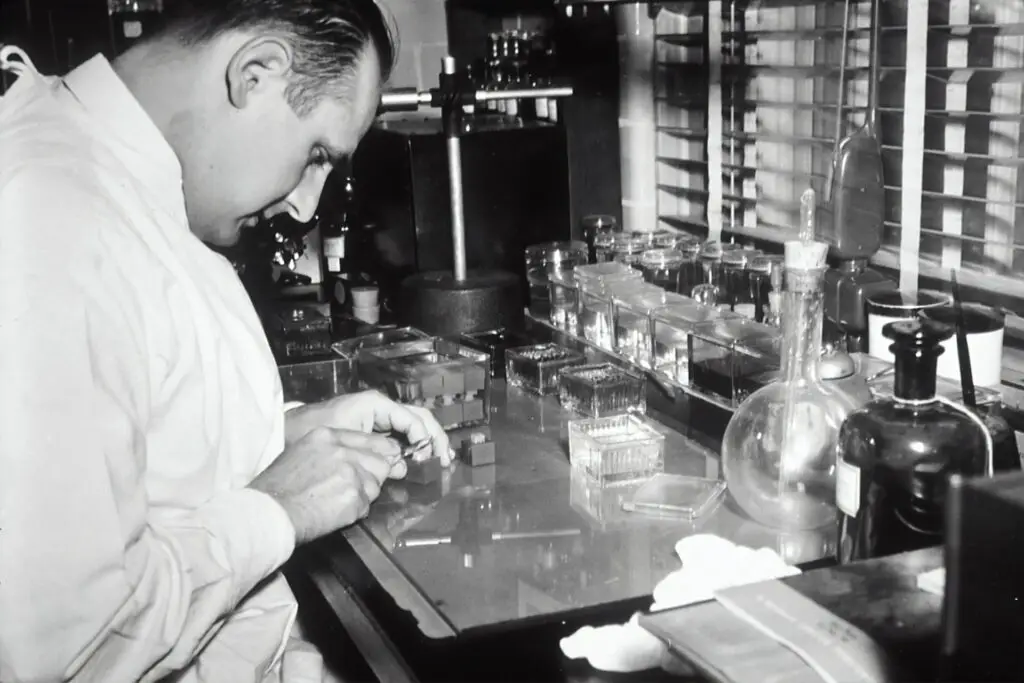
3. Using Paraffin wax to ensure anaerobic conditions and prevent dehydration of the dead animal
Doing preservation using paraffin wax is one of the most economical approaches to preserve the parts of dead animals.
It is more commonly used in histological slides than being used to preserve the whole animal body.
However, small insects like ants, grasshoppers, etc. can be preserved intact using this technique in a cheap budget-friendly way.
Using this particular technique, it is very easy to preserve the cellular details and morphology of the tissue samples for later studies. And moreover, these preserved materials can last for at least 70 years without any damage to the tissues.
This is also a simple and most economical method of maintaining pure cultures of bacteria and fungi.
In the case of small insect preservation, the specimen is first collected and is kept properly inside a 10% formalin solution for at least a day or two.
Formalin is the fixative here and keeping the specimen inside formalin will ensure that the formalin is slowly penetrated into the tissue causing chemical and physical changes that will harden and preserve the tissue and protect it against subsequent processing steps.
Next, it’s time to be kept in ethanol to dehydrate it. Dehydration is necessary because melted paraffin wax is hydrophobic so most of the water in a specimen must be removed before it can be infiltrated with wax.
So, we take out the specimen from formalin and placed it in ethanol solution following a typical dehydration sequence.
If the specimen is not more than 10 mm thick then we can follow this typical dehydration sequence by placing the specimen in 70% ethanol for 15 minutes, and then in 90% ethanol for 15 minutes, and then in 100% ethanol for 15 minutes, and next in 100% ethanol for another 15 minutes, next in 100% ethanol for 30 minutes, and at last again in 100% ethanol for another 45 minutes.
Following this typical dehydration sequence will ensure that no water is left inside the specimen. Then the next job is to treat the specimen with a clearing agent like Xylene.
Xylene will make sure that the specimen is easy to read by making the tissue transparent and clear. Also, that Xylene will act as an intermediate solvent between ethanol and paraffin wax.
This is so because wax and ethanol are largely immiscible. So we need to use an intermediate solvent like Xylene that is fully miscible with both ethanol and paraffin wax.
If the specimen is not more than 10 mm thick then we can follow this clearing sequence by placing the specimen in Xylene for 20 minutes, and then again in Xylene for 30 minutes, and then again in Xylene for the next 45 minutes.
The tissue can now be infiltrated with suitable paraffin wax. This is done by melting paraffin wax at 60°C and then pouring it on the specimen placed inside a mould through a filter paper.
And, then the mould is allowed to cool to 20°C to form a block with the specimen inside it.
So, using Paraffin wax in preservation ensures anaerobic conditions and prevents dehydration of the dead animal.
This animal can be now taken out of the wax block if required in the future or can be cut into thin sections using a microtome to prepare histological slides.
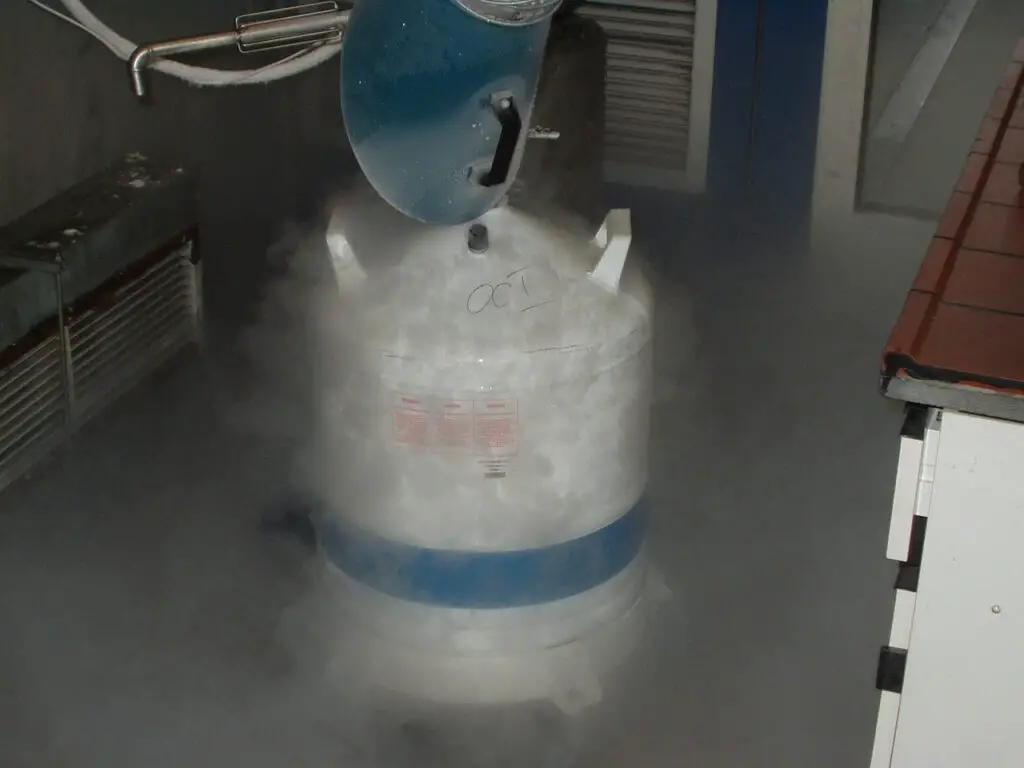
4. Performing Cryopreservation which involves freezing the dead animal in liquid nitrogen at about -196°C
Cryopreservation is actually a very expensive process for preserving any dead animal. It is only done in selective laboratories around the world, and not everywhere.
Liquid nitrogen is used in the cryopreservation technique. The reason is that during cryopreservation the cells organelles, cells, tissues, organs, or any other biological stuff of the body is preserved by cooling the samples to extremely low temperatures by keeping them inside the liquid nitrogen.
In this technique, the animal to be preserved or cultured is rapidly frozen by putting it in liquid nitrogen at -196°C in the presence of stabilizing agents such as glycerol, that prevent the formation of ice crystals.
Yes, we can use this technique to preserve dead animals, but no such high advancements are seen in this technique for preserving the full animal body. So, wet preservation using alcohol and formalin, and also dry preservation using stuffing are best suggested.
Cryopreservation’s main aim is mostly to preserve living cells and not the dead ones. And so, this process of cooling and storing cells, tissues, or organs at very low temperatures is mostly performed to maintain their viability and chances of survival of these biological samples for a longer duration of time,
In cryopreservation, various effective techniques are being developed in order to prevent cell death and damage after the biological samples are taken out of liquid nitrogen and warmed up.
For the dead animals that were being preserved using cryopreservation will just help to keep their cells intact and structured and will not in any way make the cells viable again since the cells were already dead.
Actually, the main purpose of cryopreservation is just to pause the living cell’s metabolism with ultralow temperatures, so that the cells can be preserved and used later on by the freeze-thaw process.
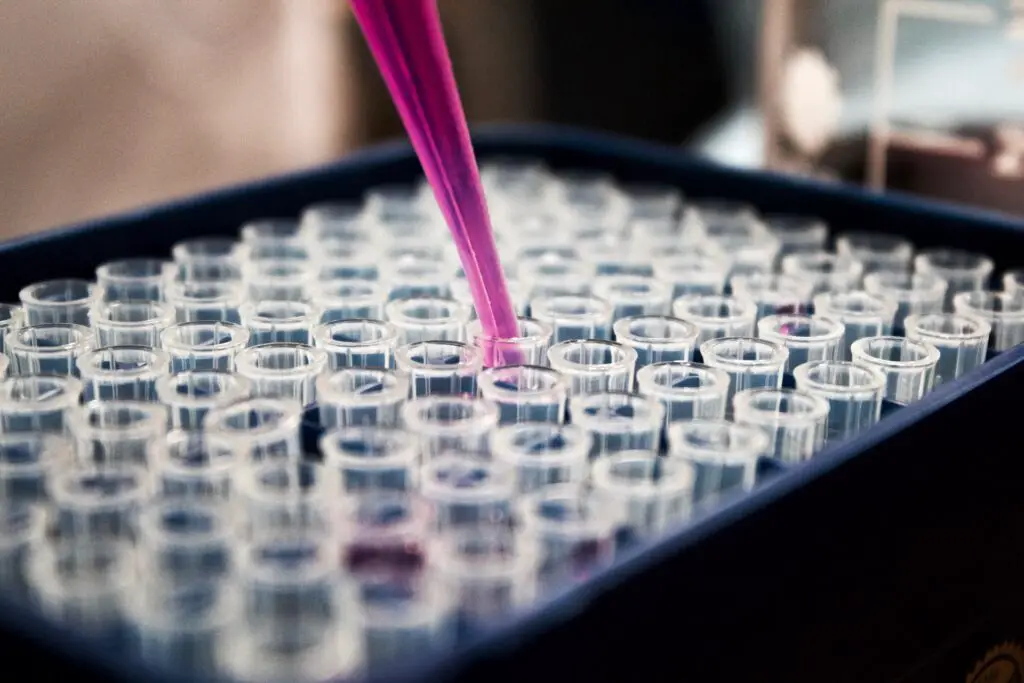
5. Doing Lyophilisation (Freeze-Drying) in which the dead animal is gently frozen, and then dried under a high-pressure vacuum to extract water out of it
The preservation process of Lyophilisation is also called the Freeze-drying process or Cryodesiccation process.
This is mostly used to preserve small biological specimens like bacteria, yeast, and mammalian cells as well.
This process involves slowly freezing the specimen and then lowering the pressure and adding heat to remove the ice crystals by sublimation.
The principle involved here is to perform sublimation of water at temperature and pressure below its triple point, that is, 611 Pascal and 0.0098 degree Celsius.
This is actually a process through which all of the water and fluid contents from the specimen are removed between the drying front and the condenser just in order to extend its preservation time.
Now, it is also to be noted that in order to protect the dehydration-sensitive specimens different poly-hydroxy compounds such as sugars, polyalcohols, and their derivatives are used in lyophilisation.
Among the various poly-hydroxy compounds, the non-reducing disaccharides like trehalose and sucrose are the most popular because they are used by almost every anhydrobiotic animal.
Remember that only the cell lines and not the whole dead body of the animal are preserved using this technique.
This technique is less commonly used to preserve dead higher vertebrates, and that the wet-preservation technique using formalin and alcohol mentioned above is used the most for complete dead body preservation.
So, Why do we need to preserve specimens?
Preservation of Specimens is very important just in order to ensure a high-quality specimen is conserved for years to come, while still maintaining the integrity, quality of information of the specimen, as well as its structure even after the death of the specimen.
Specimens must be preserved well so that the biological content doesn’t get decayed and decomposed after the death of the animals. This ensures that dead animals are always there for future reference.
Preserved specimens are actually the gold mines that provide many opportunities for biological studies, ranging from detailed research to casual field observations.
The preserved animals are very much essential to study the various ecological relationships between species, their environment, habitat, trophic levels, etc
It helps researchers to know the animal’s evolutionary patterns, ecosystem, morphology, behavior, taxonomy, life cycle, and environmental conditions that prevailed during the time the animal was alive.
Just you can consider the specimens that are found in various museums. These preserved specimens that are kept here along with the data provided on the specimen labels constitute a historic record of biological diversity and these are used as a reference to document various changes in distribution and abundance of species over time.
What liquid is used to preserve dead animals?
Alcohols like Ethyl alcohol and Isopropyl alcohol are used to preserve dead animals. Glycerin can also be used as a preservative, and if used then it may prevent desiccation or dehydration of the specimen if the container lid is loose.
Ethanol (Ethyl Alcohol) is always the best liquid preservative and is used the most as compared to Isopropanol (Isopropyl Alcohol).
Others like Bouin’s fluid, Carnoy’s fluid, and Formalin Acetic Acid Alcohol (F.A.A.) can also be used as both fixative and preservative, but their pattern of use is a bit different from ethanol and isopropanol.
Usually, 70% ethanol or isopropyl alcohol is used for preservation. And that ethanol is used the most than Isopropanol because Isopropanol doesn’t harden specimens as much as ethanol does by dehydrating it.
Actually, the use of preservatives like ethanol and isopropanol is that these fluids dehydrate the specimen by driving out water from the tissue and cells.
If ethanol is not present we can use isopropanol, and if both are not present then we must use Denatured alcohol. But, for a long time preservation ethanol is always suggested.
95% to 100% ethanol is always considered an excellent killing agent and preservative, but the use case strictly depends on the specimen you want to preserve.
It is also to be noted here that if the ethanol kept specimen is stored in cold refrigerator condition then the DNA also remains preserved for over a hundred years time period along with the specimen.
People often confuse formalin being a preservative, but here it is to be noted that formalin is not a preservative but a fixative. Fixative is that fluid that stops the deterioration and decay process of the biological specimen.
In fact, formalin is an antiseptic, disinfectant, and is specially used today as a fixative in biological preservations.
Can you preserve a dead animal in resin?
Mostly, insects are preserved in resins to give those dead ones a beautiful look and design while still preserving them for the purpose of various entomological studies and decorations as well.
Insects that are preserved in resins look like they have been well-fitted inside a transparent glass box all around it.
This glass-like transparent structure is nothing but the dried resin actually which gives the dead specimen that is placed inside a very decorative look, and also makes it clear to see the specimen inside it.
To preserve a dead insect in resin we collect a recently dead insect. If the insect had died a few days back then it may have been deformed, decayed, and broken in various body parts, so we must always choose a freshly dead insect for preserving in resin.
Next, we keep that insect in 80% alcohol for about 24 hours and let it dehydrate. This will remove free water from the tissue so that proteins can coagulate and precipitate.
Next, after 24 hours we take that insect out of alcohol and let it dry for about 5 to 10 minutes in the open air.
Then, we place the insect in a mould depending on the size of the insect. Next, we prepare the liquid resin solution that is to be filed inside the mould.
If you buy resin that comes with a catalyst, the package will tell you how many catalysts to add.
Next, you need to measure the depth of the mould and fill halfway of the mould with liquid resin.
Then we place the insect on top of the resin, and carefully center it, and let the resin harden for about 15-20 minutes until it turns to gel.
This will make sure that the insect doesn’t get up to the surface of the mould while getting filled with the resin.
Next, after that, we fill the mould completely with the resin and let it harden by keeping it in a cool, dry place so that our mold can cure properly.
We check back after 3 to 4 days, and till this time period, the mould will be hard with the resin.
While pouring the resin inside the mould it is always important that you maintain a slow and constant pour so that air bubbles don’t form inside the resin, or else the piece won’t look so professional.
Next, we remove the hardened resin structure from the mould by gently pressing it from behind.
Always make sure not to hard press it or there may be some broken, chipped, or cracked spots in the hardened resin.
If you are using rubber moulds then it is the best. So, once the resin has finished drying, peel back the rubber mould to remove the resin.
Well, the preservation of the insect is successfully done with the insect being fitted inside the hardened resin for future reference, study, and decorations. This preservation will be intact and safe for the next hundreds of years to come.
Does rubbing alcohol preserve dead animals?
Rubbing alcohol is just liquid alcohol which is either isopropanol or ethanol or denatured ethanol-based mixed with various bitterants.
It is just a very cooling, soothing, colourless, volatile, and flammable liquid that contains a 70% solution of denatured ethanol or isopropanol.
And yes, rubbing alcohol can be used as a preservative to preserve dead animals. To do this, we follow the wet-preservation technique using formalin and alcohol.
We first need to use 10% formalin as a fixative for the specimen and then following the later processes we place it inside an air-tight container filled with rubbing alcohol.
Never ever expect that by simply placing a dead animal in rubbing alcohol will preserve it properly. In fact, it will start to rot slowly after a few years. So, follow the correct pattern of preservation using a fixative like formalin.
Just note that all kinds of insects can be best preserved using rubbing alcohol. However, there are some insects like spiders, scorpions, earthworms, etc. that need stronger rubbing alcohol at around 80% or 85% alcohol concentration.

